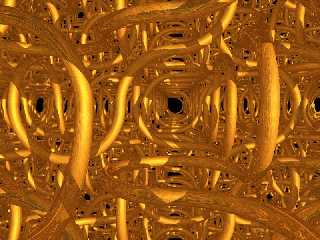|
 |
David Fontaine wrote:
>
> Anton Sherwood wrote:
> >
> > David Cook wrote:
> > > This reminds me of a post I made quite a while back. I seemed to recall
> > > this type of curve was called a "Dragon" curve, hence the title of the
> > > image. It turned out this is not what it's called, but I can't remember
> > > what the real name is now. Anyone out there remember what this curve is
> > > called?
> >
> > I have no life, so I looked up your past posts and found one entitled
> > "Space filling curves (~50Kb)", dated 1999 May 01. A couple of
> > responses called it a Truchet curve.
>
> Truchet tiling. There are randomly rotated and positioned tiles
> containing segments of the curve that connect with each other. At least
> I think that's what he did, but that's what a Truchet tiling is.
I did a search on Truchet and found, among other things, this page:
http://www.itgoesboing.com/Presentations/SIGGRAPH99Sketch/3.html
Huff's layered tiles in the 99.1 image made me wonder, if the system
would work in 3D as well.
It does, but as you can see in the attachment, it does get a little
confusing to look at. Using a reflecting texture doesn't help, I
suppose.
BTW, the Dragon curve is a fractal thingie. See
http://www.math.okstate.edu/mathdept/dynamics/dragon.html
/Ib
Post a reply to this message
Attachments:
Download 'truchet.jpg' (94 KB)
Preview of image 'truchet.jpg'

|
 |




![]()